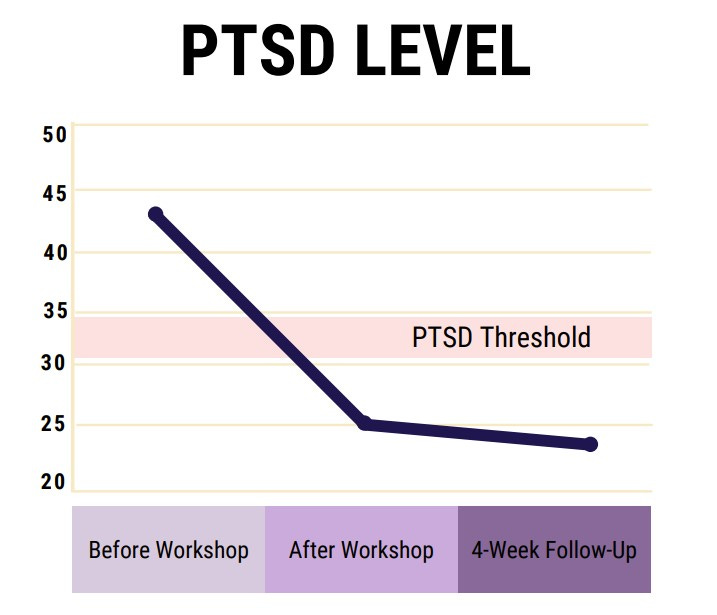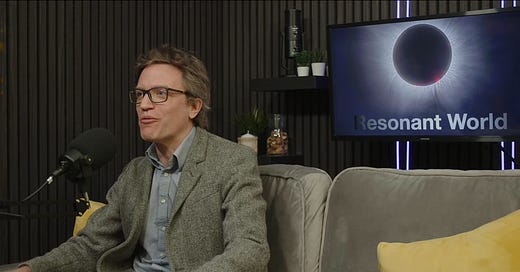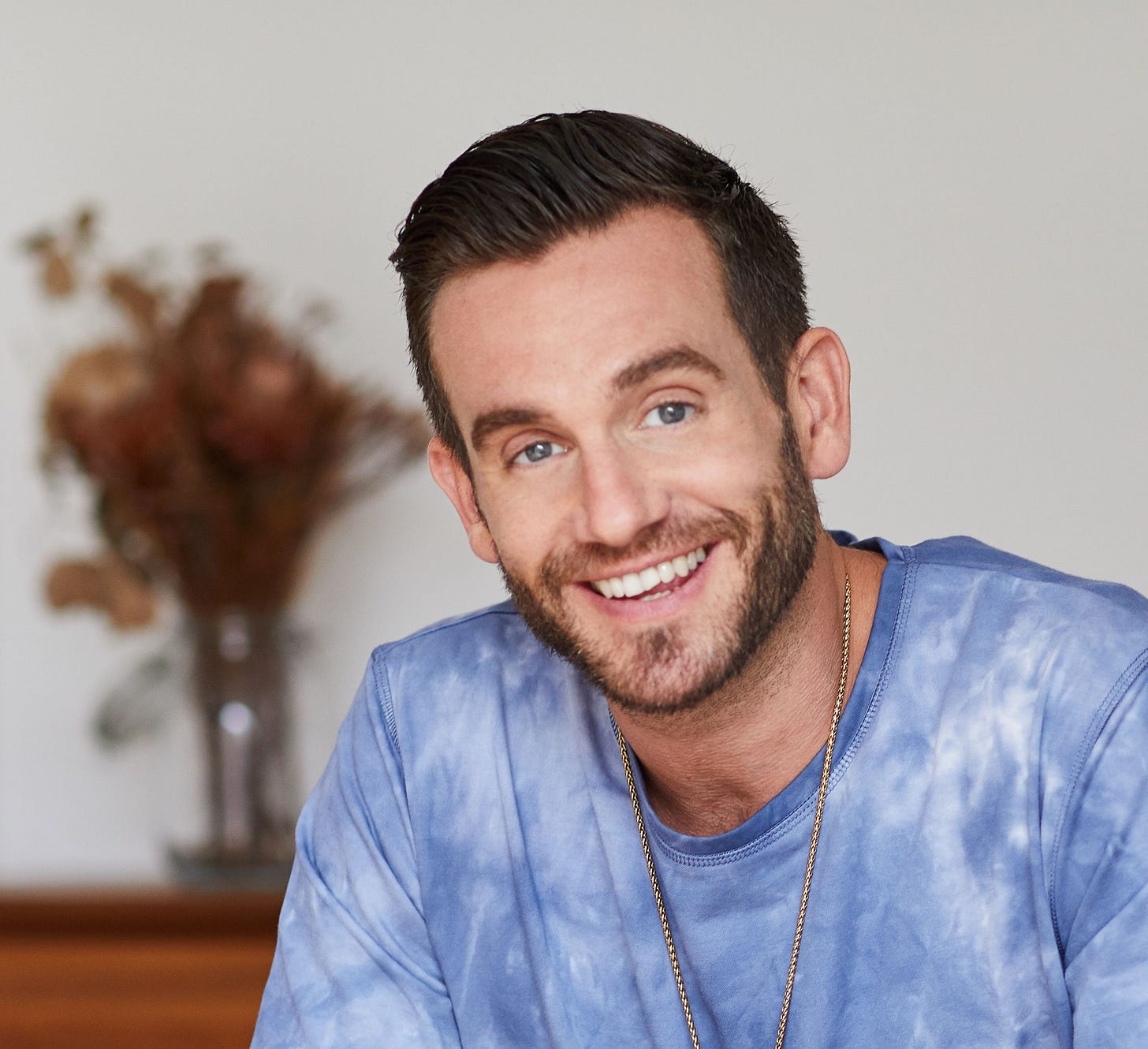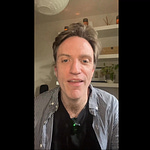Resonant World #98
The scientific consultant on the study was so astounded by the results that he had to check he hadn’t misread the data.
Of 49 people with long-term post-traumatic stress disorder (PTSD) who’d completed Charlie Morley’s six-day online course in lucid dreaming, 85 percent had reported such a dramatic reduction in symptoms that they no longer met the criteria for the diagnosis.1 The improvements held firm in a follow-up assessment four weeks later. A subsequent study yielded similar results.
After years of suffering from nightmares, anxiety, chronic stress, and hypervigilance, the participants had finally found their medicine in the dreamworld.
“There is no trauma intervention that can reduce symptoms that much in a week, that is free, non-invasive, non-medical, non-addictive, and you do in your sleep,” Charlie told me. “It is without doubt one of the most powerful interventions for post-traumatic stress disorder currently available — lucid dreaming.”
A one-time hip-hop artist, who formally became a Buddhist at the age of 19, and now a researcher, teacher and best-selling author, Charlie is on a mission to revolutionise trauma care by establishing lucid dreaming as a go-to treatment.
Listening to Charlie’s pitch, delivered with his signature fluency, humour, and enthusiasm, it’s hard to believe this inner technology isn’t on the cusp of the kind of S-shaped adoption curve usually associated with breakthrough inventions like the automobile or smartphone.
We’d met at a studio in Mortlake, southwest London, where our mutual friend James Scurry, co-founder of Safely Held Spaces and one of the organisers of the MediaStrong symposium on journalism and trauma, had arranged a recording session. (Resonant World #86: What Would It Take to Transform Journalists’ Mental Health?). A big thank-you also to Joe Tudor, founder of the social enterprise Reconnect, for help with shooting and editing.
I’d written about the study after it had appeared last June in the Journal of Traumatology, and had previously interviewed Charlie about his book Wake Up To Sleep, a trauma-informed approach to insomnia. (Resonant World #31: Lucid Dreaming to Integrate Trauma). But I’d wanted to gain a deeper understanding of Charlie’s remarkable path; understand why lucid dreaming might be so effective at resolving symptoms; and explore prospects for using the practice to address the historical and inter-generational trauma clogging our collective psyche.
Serving Military Veterans
Charlie joked that his realisation as a teenager that he could lucid dream had inevitably resulted in lengthy nocturnal scenes of sex and skateboarding. But he discovered the true power of the practice when he used it to recover from anxiety attacks and nightmares he’d suffered in the wake of a near-death experience triggered by taking psychedelics at a rave. He deepened his understanding during seven years spent living at Kagyu Samye Dzong Buddhist Centre in London, and was “authorised to teach” within the Kagyu school by Lama Yeshe Rinpoche in 2008.
An encounter with a former soldier in the Parachute Regiment named Keith McKenzie, who’d had a breakthrough resolving nightmares during a retreat Charlie was running on the Holy Isle, an island off the west coast of Scotland, set him on his present path providing free lucid dreaming courses for veterans.
Charlie described his culture shock at entering the British ex-forces community, where expletive-laced greetings are a sign of affection — a feeling I recognised from my time researching Aftershock: Fighting War, Surviving Trauma and Finding Peace, my book on the struggles of military veterans to find new ways to heal from psychological injury.
Charlie’s research was aided by a 2018 Churchill Fellowship, and subsequent collaboration with the Institute of Noetic Sciences, a California-based nonprofit founded by the late Apollo 14 astronaut Dr. Edgar Mitchell. Garret Yount, a scientist at the institute studying the interface between molecular neurobiology and consciousness, led the June 2023 study that showed the marked reduction in trauma symptoms.

In 2019, Charlie trained a group of therapists to use lucid dreaming with their clients, and an expanded 100-hour version of this course ran again last year. With a packed schedule running workshops around the world, he often has barely a day at home before heading back to the airport to bring his work to new audiences — recent trips have included Venice, Estonia, Czech Republic, and a return to the Holy Isle.
I felt our conversation yielded a glimpse of a larger organising intelligence that so often seems to inform the unfoldment of a purpose-driven life. And I felt so inspired by Charlie’s explanation of why lucid dreaming can lead to such profound breakthroughs that I resolved that one day I’d find the time to attempt to learn the practice myself.
Face-to-Face with the Unconscious
Fragments of our ordinary dreams soon dissipate if we don’t write them down. Even then, we’re often left puzzling over a surreal sequence of images that might have no obvious meaning — if we assign our dream any significance at all.
Lucid dreams are an entirely different category of experience. When we wake up during our dream, we simultaneously assume the role of audience and moviemaker, discovering we have the power to script the action in real-time. That gives us enormous scope for investigating unconscious drivers of our symptoms or behaviours that usually lie far outside our conscious awareness.
“A lucid dream is like a face-to-face conversation with the unconscious,” Charlie said. “These representations of your mind will dialogue with you, so you can meet your fear.”
Charlie uses the image of an iceberg to represent our psyche — with the visible 10 percent of the ice representing our conscious, waking mind, and the submerged 90 percent our unconscious.
Techniques such as meditation, shamanic journeying, and bodywork — while all potentially very powerful — can only take people so far beneath the surface of the water, because they’re still awake, Charlie argues.
“If you take wakefulness out of the equation, you can drop right back to the bottom of the iceberg through sleep,” he said. “Then, when you’re at the bottom of the iceberg, you re-awaken consciousness — that’s access to a level of the unconscious that’s unparalleled through any other modality.”
Dissolving into Light
Night terrors are one of the most debilitating symptoms of post-traumatic stress disorder — a sign the mind is trying to resolve a painful experience that the psyche hasn’t yet managed to digest. Lucid dreaming offers an opportunity to face the fears the nightmare represents — and release the stuck energy bound up in suppressing it.
After his near-death psychedelic experience, Charlie was haunted by nightmares of being pursued by a shaven-headed dwarf — which he interpreted as a symbol of impending death. When he became lucid in his dream, he was able to face the figure — and the threatening scene resolved into a vision of paradise (which predictably manifested as a skatepark to his teenage self) and the nightmares ended.
For workshop participants working through childhood sexual abuse, revisiting the trauma would prove too activating — and cause them to wake up. Charlie advises abuse survivors to instead call out to their “inner child” when they became lucid. One study subject described seeing her “inner child” as a little girl, crying in a corner, with her face to the wall. She called out to the child, saying: “It’s not your fault, I love you, I love you, it’s not your fault.”
“The girl dissolved into light,” Charlie said. “And then [the woman] wakes up, and she had this big integration experience.”
Another woman, whose trauma manifested as chronic pain, dreamed that a glowing golden lozenge-shaped apparition shone a light into her. She started vibrating with energy, and the lozenge exploded into light.
I was also moved to hear Charlie’s story of how his father had transformed from a threatening figure in his dreams to a loving presence as they had worked to heal the legacy of their difficult relationship while Charlie was growing up.
‘You Need to Remember’
Just as individuals participating in Charlie’s workshops had used lucid dreaming to resolve traumatic imprints from their own lives, might there be ways to come together in community to harness the practice to address the collective and inter-generational trauma that lives within and between us? This seemed like a promising avenue to explore with fellow participants in the collective trauma integration training I’ve been pursuing with Thomas Hübl and team. (Resonant World #10: How Collective Healing Works). I also wonder whether there might be scope to introduce dreamwork into the men’s circles Jacob Kishere and I are offering through our Resonant Man Initiative.
And if anybody doubts their ability to lucid dream, Charlie likes to encourage them with a reminder that this is not a new capacity — studies suggest we lucid dream as children.
“It’s an in-built factory setting — it’s not some alien imposition that we’re forcing on the mind. It’s actually something natural that we’ve forgotten how to do,” Charlie says. “You don’t need to learn how to lucid dream. You need to remember.”
Note from the Editor: Resonant World is written in the gaps between work I get paid to do, notably editing investigations at nonprofit climate news service DeSmog. It’s a huge boost when people become paid subscribers, and support of any amount affirms that my mission to serve the global community of trauma healing practitioners has value. Thank you!
Yount, G., Stumbrys, T., Koos, K., Hamilton, D., & Wahbeh, H. (2023). Decreased posttraumatic stress disorder symptoms following a lucid dream healing workshop. Traumatology. Advance online publication. https://doi.org/10.1037/trm0000456
















Share this post